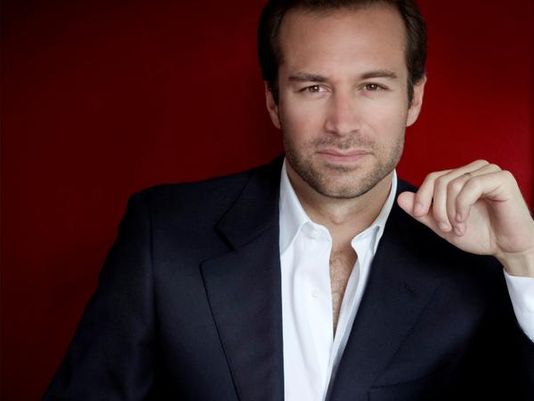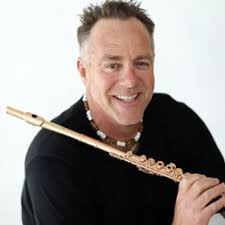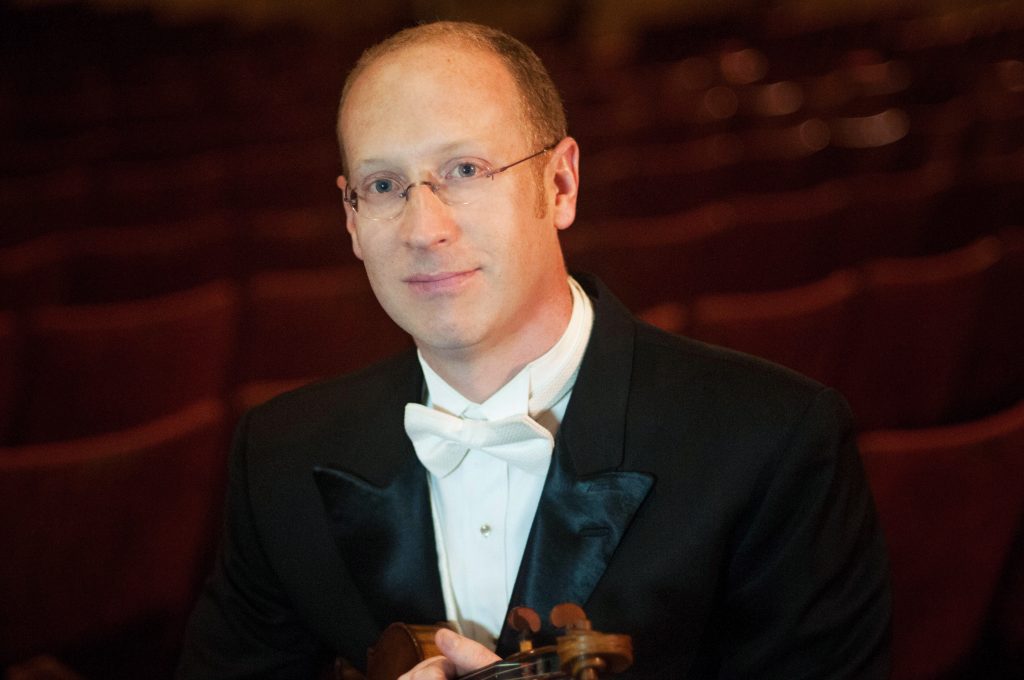San Diego Symphony’s “Russia and Paris”
Saturday evening’s (April 1) San Diego Symphony concert under the baton of Maestro Fabien Gabel, Music Director of the Quebec Symphony, brought out a full house of folks from nearly every walk of life. It was surprising to look around and instead of gazing over a sea of blue-haired ladies to instead witness a broad cross section of the population. Bravi to the development squad at the Symphony: whatever they are doing is working well. That audience was treated to a lovely concert entitled “Russia and Paris.”

Fabien Gabel (Photo by Gaetan Bernard. Used by permission of San Diego Symphony)
Claude Debussy’s early essay Printemps from 1885-86 was orchestrated by his longtime friend, composer Henri Busser. This proto-Impressionistic bonbon was reconstructed for piano four-hands by Debussy after the original version for orchestra and chorus “accidentally” burned in a fire. In fact, the piece may have been intentionally destroyed by Debussy. Apparently, feeling a soft spot in his heart for the work, he finally allowed it to see the light of day as a reconstructed four-hand piano work in 1904. Printemps’ two movements, modéré and très modéré (moderate and very moderate) lack cohesiveness, a bit like a watercolor that had been allowed to bleed too much. Its gauzy atmosphere was accentuated by Gabel’s choice to conduct without a baton, which lent itself to poetic conductorial motions. The work is a bit of a rarity on the concert platform, and apparently this lack of familiarity had a deleterious effect on its performance. Another issue that seemed to poke its pointed head was the lack of familiarity of the conductor and the orchestra. It is a pity that Gabel could not spend a few weeks here working with the Symphony, as I am sure that a longer collaboration would lead to impressive results. In any case, the work’s narrative rambled and minor albeit annoying pitch issues in the woodwinds made the whole listening experience slightly onerous. Although admirable dynamics prevailed throughout, a cogent musical statement escaped the musicians.
Stravinsky’s Violin Concerto in D Major from 1931 provided a wonderful contrast to the opening work. Its unusual orchestration of solo violin pitted against expanded winds and brass, multiple percussion, and reduced strings contributed to its incisive clarity. These stylistic attributes consciously courted by Stravinsky created the transparency that he so desperately sought in his neoclassical stylings. Eschewing extra-musical associations, the composer attempted to trim anything that might be construed as Dionysian or programmatic.
Orchestra and conductor succeeded superbly in playing with restraint and control, as is called for in this style. Unfortunately, soloist San Diego Symphony Concertmaster Jeff Thayer battled notably to be heard but was often drowned out by the
ensemble, and his sound failed to get past the first few rows. By the time it reached the Grand Tier, it was completely washed out. More’s the pity, inasmuch as Thayer’s precise intonation and excellent rhythm portended a masterful performance. In addition to the soloist’s excellent work, kudos are in order to Erica Peel for her marvelous piccolo work. While Gable chose to use a baton for clarity’s sake, the winds’ ensemble playing was not quite believable in fast passages and exposed wind section passages were often offensively out of tune if just by one note here and there. Happily, by the end of the piece the orchestra, soloist and conductor found one another and concluded admirably.
Dmitri Shostakovich’s Symphony No. 9 in Eb Major from 1945 carried a pile of extra-musical baggage leading up to its premiere. In the first place, no ninth symphony can escape the iconic association of its predecessors: Beethoven, Schubert, Bruckner and Mahler come to mind. For all of them, their majestic ninths would be their last symphonies. Shostakovich himself proclaimed that his work would be “about the greatness of the Russian people, about our Red Army liberating our native land from the enemy”. Originally intended as a choral symphony in the footsteps of Beethoven’s Ninth, he instead proffered a witty, charming and perhaps sarcastic neoclassical work in the manner of Prokofiev’s own First Symphony (Classical). Contemporaneous reports have suggested that Shostakovich was personally reeling from the official and public Soviet excoriation over his Symphony No. 8. Its brutal reception was quite probably due to Stalin’s delayed jealous reaction to the overwhelming success of its predecessor, the Symphony No. 7 (“Leningrad”), dedicated to the victims of the Nazi war machine and their encirclement and starvation of the city. That work brought the composer international fame, and its world-wide reception probably didn’t help his domestic matters with a mad dictator. One can only wonder if his Ninth Symphony was intended as an untraceable, ineffable nose thumbing at the Soviet officials who incessantly persecuted him.
In Saturday’s performance, the orchestra again had difficulties following the conductor at the beginning of the work but seemed to find a groove as the work proceeded. Nonetheless, the absolutely outstanding piccolo playing of Peel, principal flutist Rose Lombardo, and bassoonist Valentin Martchev were virtuoso displays on the highest level. Also, principal clarinetist Sheryl Renk’s extended second movement solo was excellent. The vacillating manic and depressive character of the work made for a wide emotional palette that was exciting and entertaining.
Concluding the program, Ravel’s Suite No. 2 from Daphnis et Chloé provided an impressive canvas for maestro and orchestra. The iconic work was performed with relish and apparent familiarity for the players and conductor with consequently wonderful ensemble playing which expressed a deeply moving musical journey. Paroxysms of joy and inexpressible beauty swept the hall through the brilliant orchestral virtuosity. Finally, a piece for the entire cast to shine, and shine brightly they did. Every section outdid itself with nearly perfect playing and sumptuous sound. The emotional and technically challenging flute solo was exquisitely rendered by Lombardo, one of this fine orchestra’s stars.
The major disappointment of the evening for me was the lack of any truly contemporary piece. If Russia and Paris was the theme, couldn’t a new Russian piece composed in Paris (or vice versa) have been presented? The inclusion of something more recent than 1945 would have added a great deal to the otherwise excellent program.

Yochanan Sebastian Winston, Ph.D. has performed throughout the United States, Europe and Latin America. His repertoire spans classical, jazz, klezmer, new age, contemporary, rock & roll and pop and is very active as a composer. Dr. Winston holds a Ph.D. from the UCSD, a Diplôme from the Conservatoire National de Region de Boulogne-Billancourt (France), and a Master’s and Bachelor’s of Music from the Manhattan School of Music in New York City.




“[S]ea of blue-haired ladies.” Please.
“[S]ea of blue-haired ladies.” Puhlease.
“The inclusion of something more recent than 1945 would have added a great deal to the otherwise excellent program.” May I ask what it would have added exactly ? And is the criteria only the date it was composed or would the quality of the music also matter ? I am really puzzled by the last sentence in an otherwise interesting review.
Do you like See’s Candies? I love them. Especially with a savory drink like scotch or armagnac. The unceasing sweetness of this program needed something altogether different to complete the esthetic journey. A piece by a Denisov, Gubaidulina, Rodion Shchedrin or perhaps an Alfred Schnittke would have done wonders to show that the art form is active and always evolving. IM(LT)HO